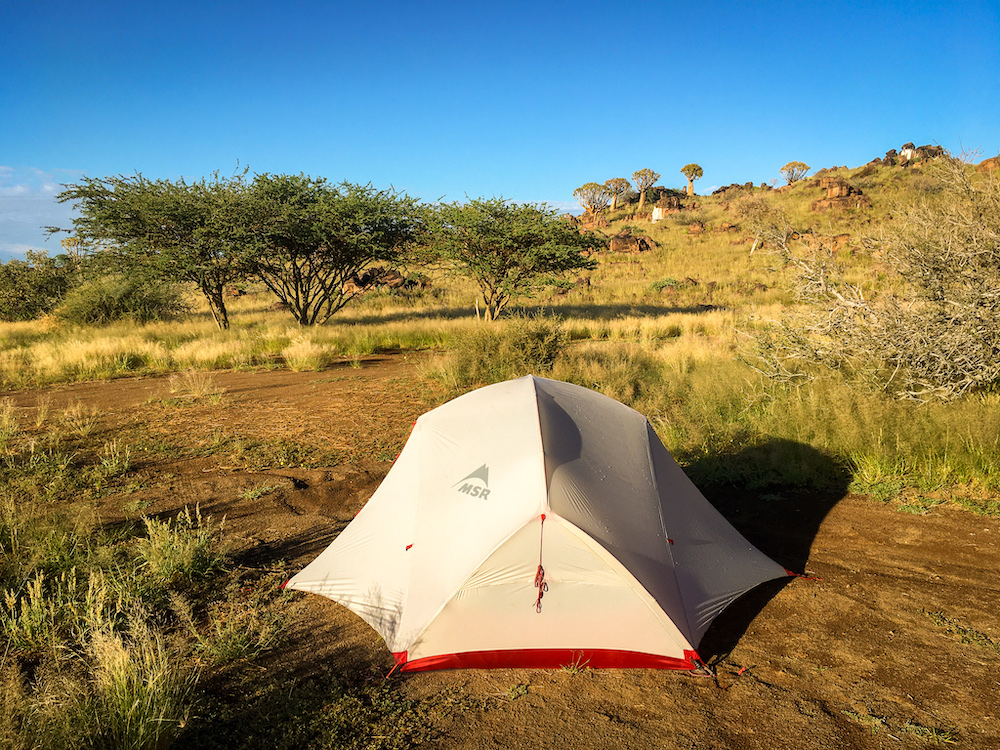I never went camping as a child, so camping isn’t some second nature for me. In fact, before I acquired camping gear, I had only camped one time in my life in Utah and otherwise called setting up a tent with a mattress and down comforters in my living room ‘camping’.
I don’t inherently like camping – I do it because it’s cheaper to camp for a week than to pay for four walls and a roof over my head. An added perk I’ve discovered is that camping spots are usually in prime locations near sites of interests, like beautiful streams, hiking trails, or sand dunes. Camping also lets you venture much deeper off the beaten path and explore places only multi-day hikes will allow. Beyond keeping gear weight down for the purposes of multi-day treks, I also don’t want to be restricted by bulky gear when it comes to my carry-on allowance for flights.
That said, my camping mindset is that my gear needs to be comfortable (like a hotel room), compact, and light.
Firstly, unless you are still a pre-teen who can handle sleepovers on your friend’s wood floor, you’re going to want to invest in a quality camping mat. I went the cheap ($30) route and immediately regretted it the next morning. Since then, I’ve gotten a thick, self-inflating mat (my lungs are weak) coated in foam. The Therm-A-Rest Trail Pro Mattress is as good as it gets for outdoor sleeping. Plus the foam adds an additional layer of insulation from cold grounds.

Secondly, a tent can make or break your experience. You can get inexpensive starter tents from Decathlon for 40 euros, but it will be heavy and bulky. An ideal tent is lightweight, rainproof, wind-tolerant, and quick to set up. We once had about 60 seconds to raise the tent before a storm hit. If you think you will be camping more regularly, then MSR Hubba Hubba NX is worth the splurge.
As sleeping bags go, I invested in the Nemo Riff 15 down sleeping bag, which cost me an arm and a leg. But it’s lightweight, cozy, and lets me camp in sub-zero temperatures (which I have subsequently discovered, is not my thing).
There are several smaller items that will make your camping more of a 5-star experience. A camping light with a carabiner will give your tent much needed light without the annoyance a flashlight will cause. Headlamps are a must to find your way to the bathroom at night. If you are traveling light, you can roll up your clothes as a pillow, but otherwise the Therm-A-Rest compressible pillows are really comfortable. If you are a light sleeper, I’d recommend mouldable silicone earplugs. You’ll spare yourself many a sleepless night listening to big bugs and animals walk around your tent. Quick-dry towels not only are super compact but you will be thankful with how fast they dry even in humid, rainy climates. Enamel camping mugs have more uses than just coffee – in a pinch they can become a small bowl, wine glass, etc. If you plan to braai (‘bbq’ in the US), pack some reusable cutlery, plastic bowls and plates.
Besides adequate shelter, water is one of the three essential things needed to survive. Most designated camping places will have running water, though some will only have rain water collected in tanks for washing up dishes and cold showers. If you find yourself camping in a remote place like this, especially if in Africa, it helps to have a way to create safe drinking water. If you can boil the water, great. That often wasn’t the case for me. When we were hiking through Kyrgyzstan and Rwanda, we brought along water purifying tablets. In Brazil, we had our Steripen – we even used this to zap the water in the hotels with UV light. If your water source is a stream, collect water from where it runs fastest to avoid grit. Alternatively, you can use a filter mechanism on your Nalgene bottle to filter out any particles before zapping the water with the Steripen.